
Alicia, officially the Municipality of Alicia, is a 3rd class municipality in the province of Zamboanga Sibugay, Philippines. According to the 2020 census, it has a population of 39,456 people.. Alicia is the gateway to Olutanga Island via Guicam Port in Brgy. Guicam where the Guicam Bridge will soon rise.

Buug, officially the Municipality of Buug, is a 3rd class municipality in the province of Zamboanga Sibugay, Philippines. According to the 2020 census, it has a population of 38,425 people.
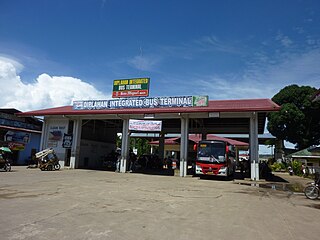
Diplahan, officially the Municipality of Diplahan, is a 3rd class municipality in the province of Zamboanga Sibugay, Philippines. According to the 2020 census, it has a population of 32,585 people.

Imelda, officially the Municipality of Imelda, is a 4th class municipality in the province of Zamboanga Sibugay, Philippines. According to the 2020 census, it has a population of 26,020 people.

Ipil, officially the Municipality of Ipil, is a 1st class municipality and capital of the province of Zamboanga Sibugay, Philippines. According to the 2020 census, it has a population of 89,401 people. Ipil is the most populous municipality of Zamboanga Sibugay, and the second most populous in Region IX after Sindangan.
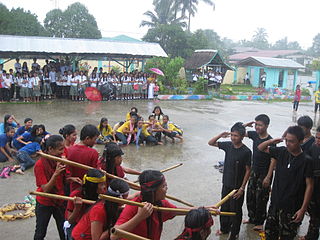
Kabasalan, officially the Municipality of Kabasalan, is a 2nd class municipality in the province of Zamboanga Sibugay, Philippines. According to the 2020 census, it has a population of 46,884 people.

Mabuhay, officially the Municipality of Mabuhay, is a 4th class municipality in the province of Zamboanga Sibugay, Philippines. According to the 2020 census, it has a population of 37,390 people.
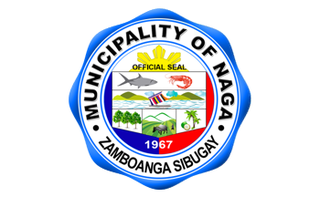
Naga, officially the Municipality of Naga, is a 3rd class municipality in the province of Zamboanga Sibugay, Philippines. According to the 2020 census, it has a population of 41,743 people.
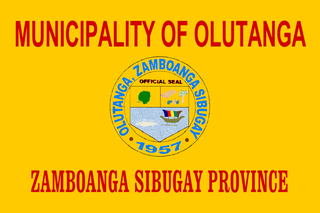
Olutanga, officially the Municipality of Olutanga, is a 4th class municipality in the province of Zamboanga Sibugay, Philippines. According to the 2020 census, it has a population of 38,438 people.

Payao, officially the Municipality of Payao, is a 3rd class municipality in the province of Zamboanga Sibugay, Philippines. According to the 2020 census, it has a population of 34,952 people.
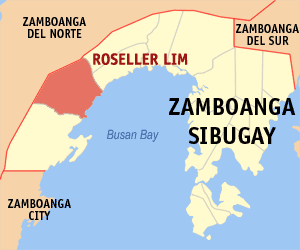
Roseller T. Lim, officially the Municipality of Roseller T. Lim, is a 3rd class municipality in the province of Zamboanga Sibugay, Philippines. According to the 2020 census, it has a population of 43,575 people.

Siay, officially the Municipality of Siay, is a 2nd class municipality in the province of Zamboanga Sibugay, Philippines. According to the 2020 census, it has a population of 40,585 people.

Talusan, officially the Municipality of Talusan, is a 5th class municipality in the province of Zamboanga Sibugay, Philippines. According to the 2020 census, it has a population of 27,873 people.

Titay, officially the Municipality of Titay, is a 2nd class municipality in the province of Zamboanga Sibugay, Philippines. According to the 2020 census, it has a population of 53,994 people.

Leon B. Postigo, officially the Municipality of Leon B. Postigo, is a 4th class municipality in the province of Zamboanga del Norte, Philippines. According to the 2020 census, it has a population of 27,639 people.

Tampilisan, officially the Municipality of Tampilisan, is a 4th class municipality in the province of Zamboanga del Norte, Philippines. According to the 2020 census, it has a population of 24,680 people.

Kumalarang, officially the Municipality of Kumalarang, is a 4th class municipality in the province of Zamboanga del Sur, Philippines. According to the 2020 census, it has a population of 29,479 people.

Pitogo, officially the Municipality of Pitogo, is a 4th class municipality in the province of Zamboanga del Sur, Philippines. According to the 2020 census, it has a population of 27,516 people.
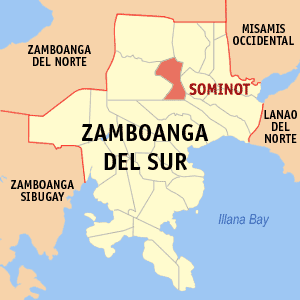
Sominot, officially the Municipality of Sominot, is a 5th class municipality in the province of Zamboanga del Sur, Philippines. According to the 2020 census, it has a population of 19,061 people.

Tambulig, officially the Municipality of Tambulig, is a 4th class municipality in the province of Zamboanga del Sur, Philippines. According to the 2020 census, it has a population of 37,480 people.
























